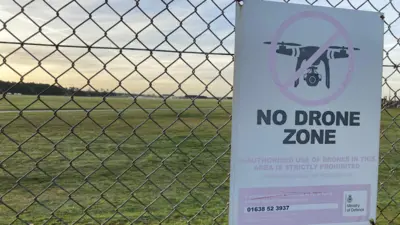We've updated our Privacy and Cookies Policy
We've made some important changes to our Privacy and Cookies Policy and we want you to know what this means for you and your data.
Franklin expedition: Will we ever know what happened?
- Author, Kate Dailey
- Role, │╔╚╦┐ý╩Í News Magazine
Canadian explorers have drawn a blank in the latest hunt for the remains of Captain Sir John Franklin's fatal expedition, 160 years after he took 129 men deep into the Arctic. But will the mystery of the doomed crew ever be unravelled?
In 1845, Capt Franklin, an officer in the British Royal Navy, took two ships and 129 men towards the Northwest Territories in an attempt to map the Northwest Passage, a route that would allow sailors to travel from the Atlantic to the Pacific via the icy Arctic circle.
Stocked with provisions that could last for seven years, and outfitted with the latest technology and experienced men, the two ships - HMS Erebus and HMS Terror - were some of the biggest, strongest, vessels ever to make the journey.
But the men vanished into the frozen Arctic, leaving a few clues but no explanation as to what went wrong.
Top Stories
The first search party set off in 1848 and searches involving teams from Canada, the UK, and the US have continued ever since. Last week, representatives from Parks Canada announced the results from their search this summer, which proved unsuccessful.
Top Stories
"What people have been looking for has changed. We've given up looking for survivors, we've given up looking for bodies. Now we're just looking for any answers," says William Battersby, who wrote the biography of James Fitzjames, the captain of the Erebus.
"The extraordinary thing is that despite all this effort, after 160 years and by thousands of people, we still don't know where the ships are, and what happened on the expedition, or what happened to most of the men."
Scattered remains
Explorers have found rock cairns with messages from sailors who abandoned ship. They've taken oral history from Inuit people whose ancestors saw the ships get stuck in giant ice floes. In several cases, they've dug up the bones and preserved bodies of the ship's crew. But they've found no ships, no logs, and no sign of Franklin himself.
In subsequent years, a rough sketch of the troubles emerged. During the first winter, the crew disembarked, travelled south to hunt. Franklin left a reassuring message in a rock cairn, signed "All well". A month later, he was dead.
A year later, the crew returned to the cairn and updated the note. By that time, 15 sailors had died.
"If it had just been that, it would have been one of the biggest disasters of Arctic exploration," says Ted Betts, a Toronto lawyer and author of the blog Franklin's Ghost. But it wasn't just that.
From that time on, things only got worse. The men, sickened from scurvy, tuberculosis and lead poisoning, got weaker and weaker. They reportedly abandoned ship in 1848, only to meet a cold death elsewhere.
In 1859, an explorer sent by Franklin's wife travelled to the spot where the ships had been abandoned. He didn't find the Terror or the Erebus. Instead, he found a small whaleboat, full of books, chocolates, and the skeletons of two sailors.
The boat, says Russell Potter, professor of English at Rhode Island College, was pointed towards where the abandoned ship once sat.
Top Stories
"Maybe they weren't trying to get away, but to get back to their ship and die in comfort," he says. "It's a very poignant arrangement."
Two other locations offered a concentrated amount of remains, says Battersby. "They do seem to be associated with men who just abandoned ship, gave up hope of ever being rescued, and sadly, gradually, cannibalised the bodies of their comrades."
A few fully-preserved corpses have been found in the snow as well. But the bodies of others, including Franklin, are missing.
"They simply disappeared. It's like Apollo 13 went around the moon and never came back again," says Battersby.
"They never had a date of death, a place of death. They're immortals who are trapped between life and death. Are they ghosts? How long did the last one live? We just don't know."
Desolate and desperate
For Ron Carlson, a Chicago architect and licensed bush pilot, it's easy for him to understand why, after all these years, the ships are still missing - and how desolate the last days must have been for men on that doomed ship.
"It's vast. When I flew, I could look out over Victoria Strait and see 50 miles of ice pack in all directions," he says. "It's like the surface of the moon, but without any marks."
The broad and punishing size of the search area dwarfs the high-tech equipment and meticulous research used by the Parks Canada team, and the other explorers before them.
"Both of the ships were caught in the ice for two years but slowly drifting south in a very large body of water," says Marc-Andre Bernier, chief of underwater archaeology services at Parks Canada.
That could mean that the ships are hundreds of miles apart. "For us, it's just as important to know where they're not," he says, so that future searches can start fresh.
For sailors on the Terror and Erebus, the barren landscape and dim prospects possibly only added to an increasing sense of foreboding.
"It seems very clear from several sources that the men on these ships suffered from terrible lead poisoning, which leads to depression," says Battersby, who read the records from an earlier trip by the Terror to the Arctic.
"The account of the Terror's voyage of that year says how bad the atmosphere was, how demoralised people were and how depressed they all were."
Battersby believes that the ships themselves, which had an internal pipe system to melt ice and provide fresh water, was the source of the poison.
Finding the ships could prove this theory. It would also bring to a close a search first launched in the time of Queen Victoria. But it wouldn't end the mystery.
"It's really just the beginning," says Betts. The papers, artifacts, and infrastructure will provide a whole new raft of information and leads - and more fodder for followers of the Franklin expedition's sad fate.
Top Stories
More to explore
Most read
Content is not available








